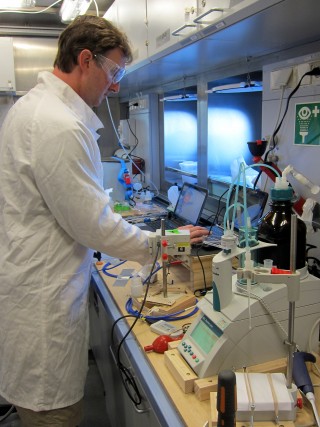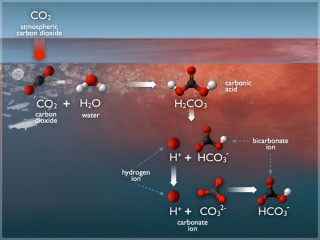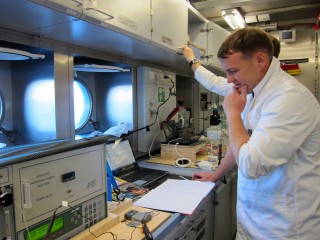The world’s oceans are 30% more acidic today than only 200 years ago. And by the end of this century, ocean acidity is expected to have increased by an incredible 100–150%. Clearly, this does not bode well and you may be wondering what all of this means for the many plants and animals living in the ocean. Well, ocean acidification is fundamentally changing the chemistry of the seawater – and this is a big problem for corals and other calcifying marine organisms, particularly those in the deep ocean.
Ocean acidification broken down

So what exactly is ocean acidification? Human activities (particularly the burning of fossil fuels) are producing large amounts of CO2, a big part of which is being taken up by the world’s oceans. This is causing the chemistry of the ocean to change more quickly than ever before. Specifically, as CO2 enters the ocean, it forms carbonic acid and hydrogen ions are released causing it to become more acidic – thus lowering the pH of seawater. This ultimately leads to a lower calcium carbonate saturation state – meaning the building blocks for growing a calcium carbonate skeleton in these waters are less abundant. This, in turn, makes it harder for calcifying marine organisms such as corals and molluscs to build their skeletons or shells.

In the deep ocean, corals already have to cope with a naturally lower saturation state of seawater. Below a certain depth, the saturation state becomes so low that seawater starts to be corrosive, meaning skeletons and shells start to dissolve. You might be surprised to learn, however, that corals are still able to grow skeletons at these depths. To do this, some corals can locally increase the saturation state at the site where the skeleton is being formed, making it easier for them to precipitate calcium carbonate. Others build their skeletons with the same building blocks, but arrange them in a different way that makes them more resistant to the corrosive seawater.
Historic skeletons

Because the deep sea already experiences conditions that are not expected to occur in the shallow ocean for another few decades, it is an ideal natural laboratory to study how ocean acidification is going to affect corals. To do this, it is critical to obtain precise measurements of the carbonate chemistry of the seawater that the corals are growing in. Scientists on board R/V Falkor have been collecting seawater samples almost every day from different water depths using the CTD rosette. These are then immediately analysed in the ship’s laboratory. These data will not only help us to track ocean acidification in the deep sea, but also to determine how efficiently corals can buffer their internal carbonate chemistry against external changes in seawater pH, and thus how resistant they are to ocean acidification. And because deep sea corals often live for many decades or even centuries, their skeletons even allow us to go back in time to see how seawater chemistry has changed historically.


